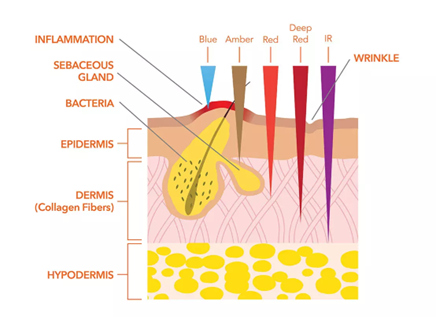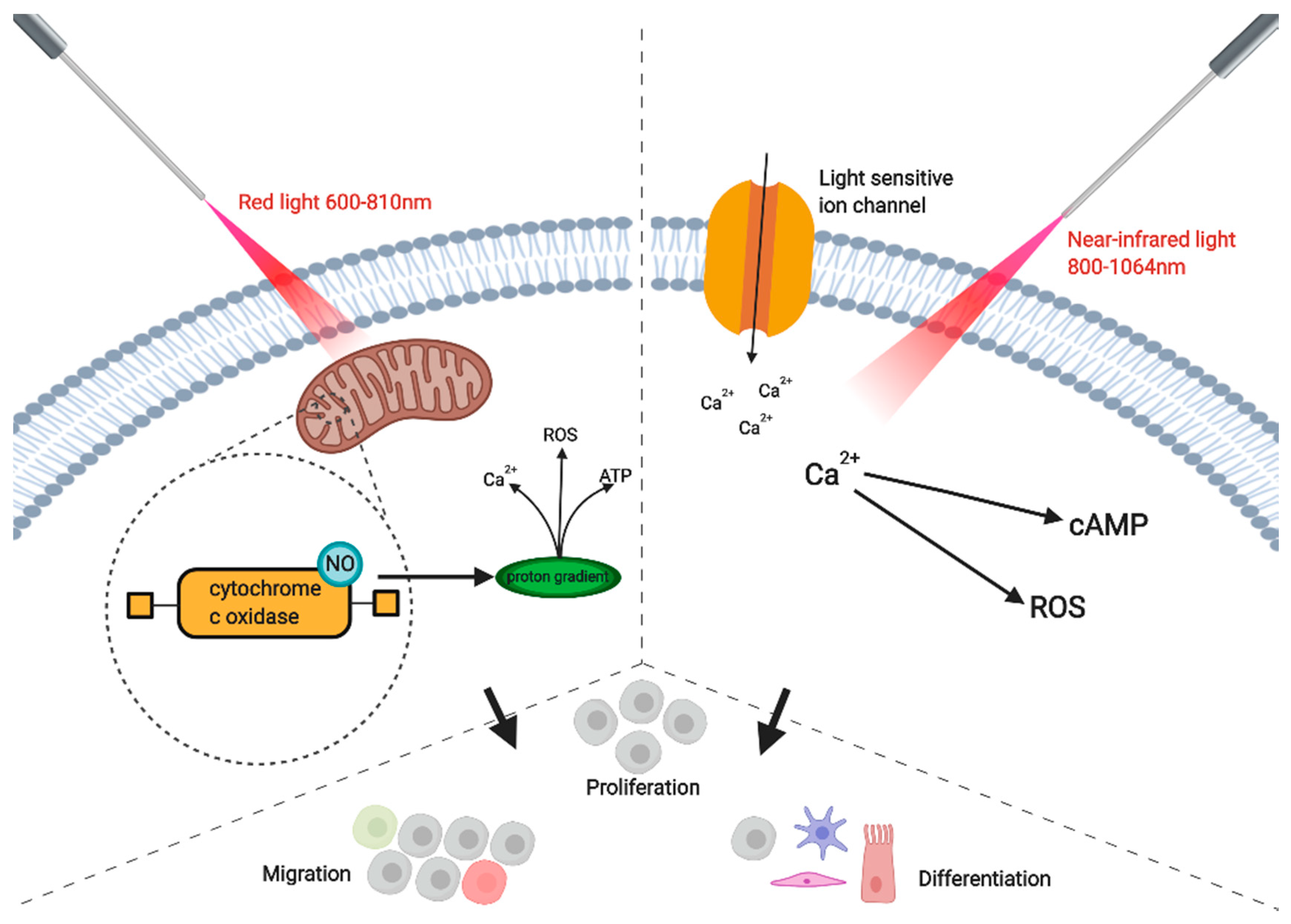Photobiomodulation Things To Know Before You Buy
Wiki Article
Little Known Questions About Photobiomodulation.
Table of ContentsThe Best Guide To PhotobiomodulationThe Main Principles Of Photobiomodulation Everything about PhotobiomodulationIndicators on Photobiomodulation You Should Know
Laser therapy is a medical treatment that makes use of focused light to boost a process called. During PBM, photons get in the cells and engage with the cytochrome c facility within mitochondria. This communication sets off a biological cascade of events that results in a boost in cellular metabolic rate, which can as well as speed up the recovery process.There is agreement that the application of a therapeutic dosage of light to damaged or inefficient cells brings about a cellular feedback moderated by mitochondrial devices. Photobiomodulation. Studies have actually revealed that these adjustments can influence discomfort and swelling, along with, cells fixing
Modifications in ATP, reactive oxygen species and nitric oxide comply with light absorption by Cc, O. These effects are redox state and dosage reliant. In hypoxic or otherwise stressed out cells it has actually been shown sometimes that following, nitric oxide is launched, ATP is increased and oxidative anxiety is lowered [27-31]

Getting My Photobiomodulation To Work
PBM gadgets have been removed for marketing by FDA via the Premarket Notification/510( k) process as adjunctive devices for the momentary alleviation of pain. These clearances were based on the presentation of clinical information to sustain such cases (Photobiomodulation). In this treatment, a source of light is placed near or touching the skin, permitting the light energy (photons) to pass through cells where it interacts with chromophores found in cells leading to photophysical and photochemical changes that result in alterations at the molecular, mobile and tissue levels of the bodyRemarkably, recent study indicates that light can improve performance in regular tissues and cells. The potential applications of PBMT are various and are being checked out experimentally at the standard scientific research, pre-clinical and clinical level. The present professional usages are for the relief of pain and inflammation and the treatment of sports injuries.

The therapy parameters and number of sessions needed for PBMT depend on location and reason. PBMT typically needs more than one therapy for optimal discomfort alleviation. It might take several therapies for the outcomes to come to be obvious. reports that it can take anywhere from eight to 30 sessions for a treatment to be completely reliable, and some individuals find it necessary to undergo therapy two to four times each week.
The Greatest Guide To Photobiomodulation
Therapy specifications for PBMT were initially established making use of cells in vitro and in small pet models. These therapy criteria usually had a reduced irradiance and fluence and functioned well for cutaneous applications. When clinicians began to use PBMT to deal with frameworks that were located deeper in the body, they used these specifications with adverse outcomes.
We currently understand that these unfavorable studies resulted from inaccurate device and therapy parameters for transcutaneous therapy of deeper structures. Current developments in laser therapy gadgets and even more study into the ideal dosages have actually significantly boosted the outcomes of PBMT. For dealing with deep tissues, the wavelength of light used establishes the depth of infiltration right into a cells.
It is vital that a clinician uses view it the proper wavelength of light and parameters to deal with a problem. One wavelength and one set of treatment parameters will certainly not be reliable for all problems. Negative side results have not been reported from making use of PBMT (Photobiomodulation). Updated June 27, 2016Juanita j
Light therapy is a non-invasive treatment that works by raising the capacity of the cell to develop power (ATP) to recover the area being dealt with. Therefore, it can decrease swelling, swelling, and pain in the area. Research study around recommended you read is expanding, with even more in-depth research documents connected listed below for those who wish to find out more.
The Best Guide To Photobiomodulation
In the first experiment, Dr. Endre Mester, made use of cut rats and observing how the laser impacted their ability to grow hair compared to the team that was not obtaining LLLT. He located that the group of mice obtaining LLLT were able to grow their hair back faster than the team of mice that didn't obtain LLLT (Hoon C, et alia; 2012).This therapy is termed this means to distinguish the difference in between the lasers some occupations make use of to reduce (eg. Low-level light therapy is painless, non-invasive treatment.
LLLT has a biphasic action, meaning that reduced doses are usually attended be extra useful than greater doses. useful content That being said, doses greater or less than the optimum dose does not impact (Hoon C, et al; 2012). Therefore, it can be difficult to have studies on LLLT with many specifications.
Some firms integrated the two (LED and laser) to supply an extra well-shaped treatment since lasers can pass through much deeper than LED and infrared light (Norman Doidge, The Brain's Means of Recovery, 2015). Throughout therapy, the location that is being treated is exposed to LED light from a Bio, Flex Laser, which is at 660 nm wavelength, followed by infrared light at 830-840 nm wavelength.
Report this wiki page